Discover 20 hidden attractions, cool sights, and unusual things to do in Granada (Spain). Don't miss out on these must-see attractions: Generalife, Alhambra, and Partal Palace. Also, be sure to include Cathedral of Granada in your itinerary.
Below, you can find the list of the most amazing places you should visit in Granada (Andalusia).
Table of Contents
Generalife
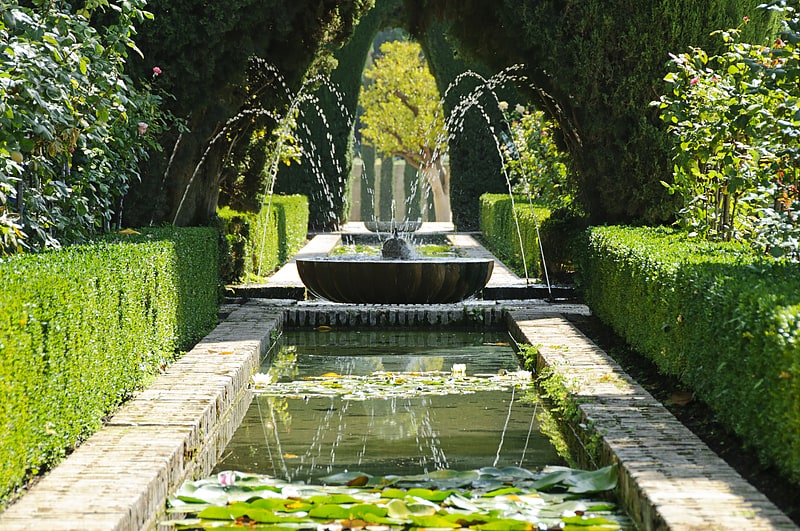
Palace in Granada, Spain. The Generalife was a summer palace and country estate of the Nasrid rulers of the Emirate of Granada in Al-Andalus. It is located directly east of and uphill from the Alhambra palace complex in Granada, Spain.[1]
Alhambra

Fortified hilltop Moorish complex. The Alhambra is a palace and fortress complex located in Granada, Andalusia, Spain. It is one of the most famous monuments of Islamic architecture and one of the best-preserved palaces of the historic Islamic world, in addition to containing notable examples of Spanish Renaissance architecture.
The complex was begun in 1238 by Muhammad I Ibn al-Ahmar, the first Nasrid emir and founder of the Emirate of Granada, the last Muslim state of Al-Andalus. It was built on the Sabika hill, an outcrop of the Sierra Nevada which had been the site of earlier fortresses and of the 11th-century palace of Samuel ibn Naghrillah. Later Nasrid rulers continuously modified the site. The most significant construction campaigns, which gave the royal palaces much of their definitive character, took place in the 14th century during the reigns of Yusuf I and Muhammad V. After the conclusion of the Christian Reconquista in 1492, the site became the Royal Court of Ferdinand and Isabella (where Christopher Columbus received royal endorsement for his expedition), and the palaces were partially altered. In 1526, Charles V of Spain commissioned a new Renaissance-style palace in direct juxtaposition with the Nasrid palaces, but it was left uncompleted in the early 17th century. After being allowed to fall into disrepair for centuries, with its buildings occupied by squatters, the Alhambra was rediscovered following the defeat of Napoleon I, whose troops destroyed parts of the site. The rediscoverers were first British intellectuals and then other American and northern European Romantic travelers. The most influential of them was Washington Irving, whose Tales of the Alhambra (1832) brought international attention to the site. The Alhambra was one of the first Islamic monuments to become the object of modern scientific study and has been the subject of numerous restorations since the 19th century. It is now one of Spain's major tourist attractions and a UNESCO World Heritage Site.
During the Nasrid era, the Alhambra was a self-contained city separate from the rest of Granada below. It contained most of the amenities of a Muslim city such as a Friday mosque, hammams (public baths), roads, houses, artisan workshops, a tannery, and a sophisticated water supply system. As a royal city and citadel, it contained at least six major palaces, most of them located along the northern edge where they commanded views over the Albaicín quarter. The most famous and best-preserved are the Mexuar, the Comares Palace, the Palace of the Lions, and the Partal Palace, which form the main attraction to visitors today. The other palaces are known from historical sources and from modern excavations. At the Alhambra's western tip is the Alcazaba fortress. Multiple smaller towers and fortified gates are also located along the Alhambra's walls. Outside the Alhambra walls and located nearby to the east is the Generalife, a former Nasrid country estate and summer palace accompanied by historic orchards and modern landscaped gardens.
The architecture of the Nasrid palaces reflects the tradition of Moorish architecture developed over previous centuries. It is characterized by the use of the courtyard as a central space and basic unit around which other halls and rooms were organized. Courtyards typically had water features at their center, such as a reflective pool or a fountain. Decoration was focused on the inside of the building and was executed primarily with tile mosaics on lower walls and carved stucco on the upper walls. Geometric patterns, vegetal motifs, and Arabic inscriptions were the main types of decorative motifs. Additionally, "stalactite"-like sculpting, known as muqarnas, was used for three-dimensional features like vaulted ceilings.[2]
Address: Calle Real de la Alhambra, s/n, 18009 Granada (Centro de Granada)
Partal Palace
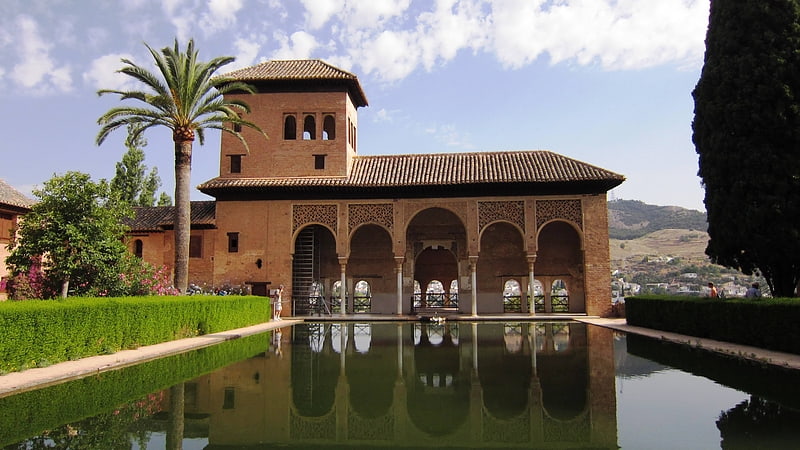
Partal Palace is a palatial structure inside the Alhambra fortress complex located in Granada, Spain. It was originally built in the early 14th century by the Nasrid ruler Muhammad III, making it the oldest surviving palatial structure in the Alhambra.[3]
Cathedral of Granada

Also known as: Catedral de Granada
Ornate cathedral with an elegant dome. Granada Cathedral, or the Cathedral of the Incarnation is a Roman Catholic church in the city of Granada, capital of the province of the same name in the Autonomous Region of Andalusia, Spain. The cathedral is the seat of the Archdiocese of Granada. Like many other cathedrals in Andalusia, it was built on top of the city's main mosque after the reconquest of Granada.[4]
Address: Calle Gran Vía de Colón, 5, 18001 Granada (Centro de Granada)
Palace of Charles V
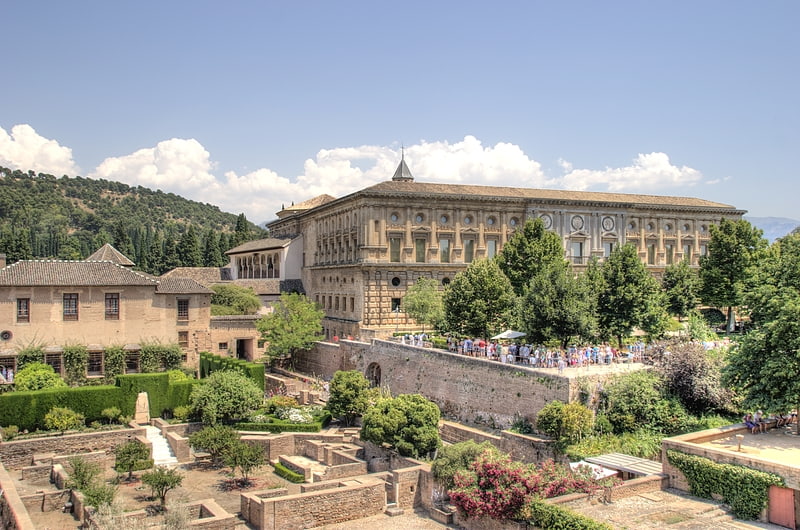
Also known as: Palacio de Carlos V
Renaissance palace at Alhambra complex. The Palace of Charles V is a Renaissance building in Granada, southern Spain, inside the Alhambra, a former Nasrid palace complex on top of the Sabika hill. Construction began in 1527 but dragged on and was left unfinished after 1637. The building has never been a home to a monarch and stood roofless until 1967. Today, the building also houses the Alhambra Museum on its ground floor and the Fine Arts Museum of Granada on its upper floor.[5]
Royal Chapel
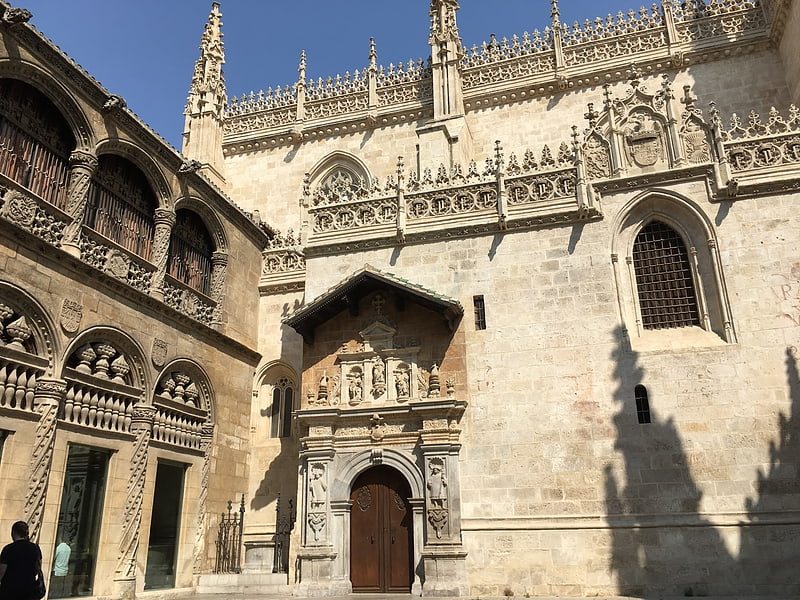
Also known as: Capilla Real de Granada
Ornate burial site of Catholic kings. The Royal Chapel of Granada is an Isabelline style building, constructed between 1505 and 1517, and originally integrated in the complex of the neighbouring Granada Cathedral. It is the burial place of the Spanish monarchs, Queen Isabella I and King Ferdinand, the Catholic Monarchs. Apart from these historical links, this building also contains a gallery of artworks and other items associated with Queen Isabella.[6]
Address: Calle Oficios S/N, 18001 Granada (Centro de Granada)
Parque de las Ciencias
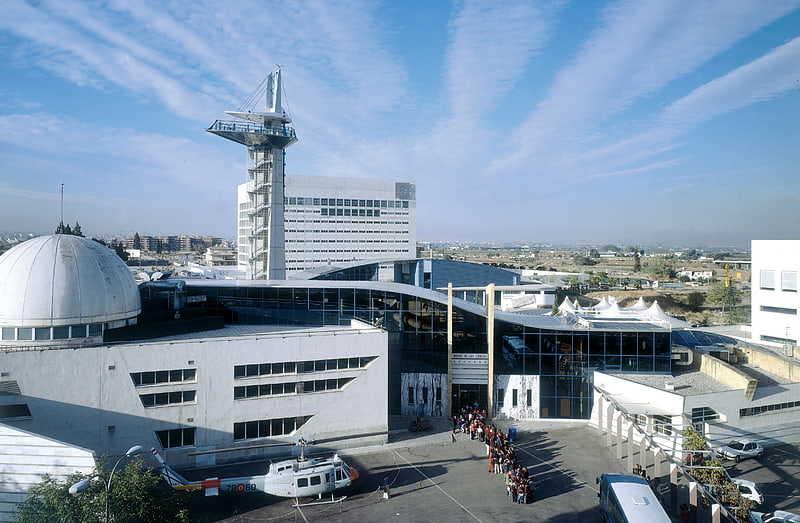
Museum in Granada, Spain. Parque de las Ciencias is a science centre and museum, part of the European Network of Science Centers and Museums, located in the city of Granada, Andalusia, Spain. Parque de las Ciencias, under the motto "A new kind of Museum", was founded in 1990 and opened in 1995. The museum has been solely directed by Ernesto Páramo Sureda since it’s establishment, throughout the museum project and it’s successive expansions. It occupies 70,000 m2 and holds permanent and temporary exhibitions, including: a planetarium, educational facilities, café, restaurant, bookshop, library, cinemas, etc. It has a cultural gallery, consisting of several versatile and flexible spaces, with different capacities, ranging from 50 to 550 in number. Some of the museum’s highlights are its Plastination Lab and Restoration and Production Workshops.
Parque de las Ciencias council members consists of: The University of Granada, The Spanish National Research Council (CSIC, which is the largest public institution dedicated to research in Spanish), the local, provincial and regional governments and The Caja Granada Foundation. Some of the museum’s highlights are it’s 'Windows to Science' and 'Live Science', which through crystal bounded spaces, provides the visitors with a scientific insight, as performed in actual labs.[7]
Address: Avenida Ciencia s/n, 18006 Granada (Ronda)
Albaicín
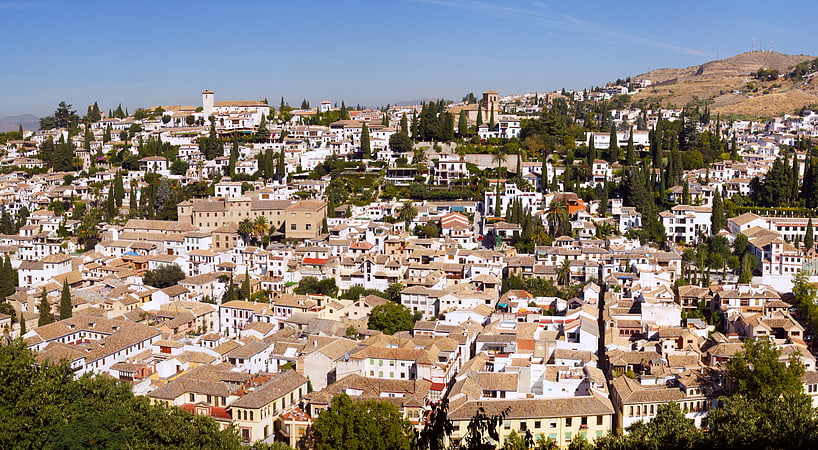
The Albaicín, historically known as Albayzín, is a district of Granada, in the autonomous community of Andalusia, Spain. It retains the narrow winding streets of its Medieval Moorish past dating back to the Zirid dynasty. It was declared a World Heritage Site in 1984, along with the Alhambra.[8]
Address: Plaza San Miguel bajo, 4, Granada (Albaicín)
El Bañuelo
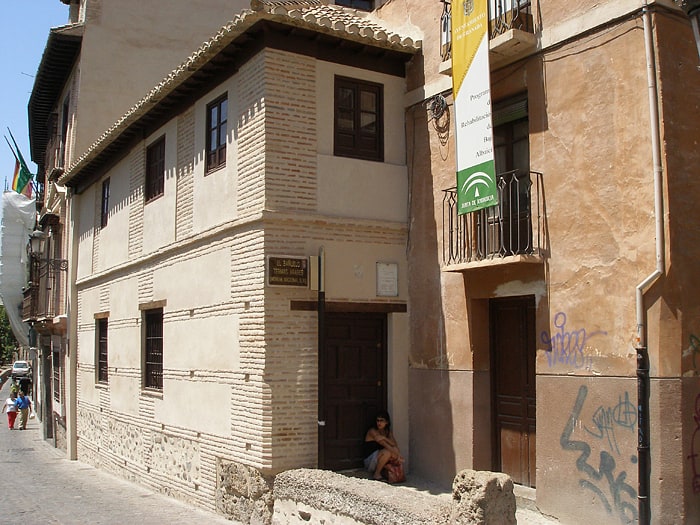
The Bañuelo or El Bañuelo, also known as the Baño del Nogal or Hammam al-Yawza, is a preserved historic hammam in Granada, Spain. It is located in the Albaicin quarter of the city, on the banks of the Darro River. It was used as a bathhouse up until the 16th century at least, before becoming defunct and being converted to other uses. In the 20th century it underwent numerous restorations by Spanish experts and is now open as a tourist attraction.[9]
Address: Carrera Darro 31, 18010 Granada (Albaicín)
Cuarto Real de Santo Domingo
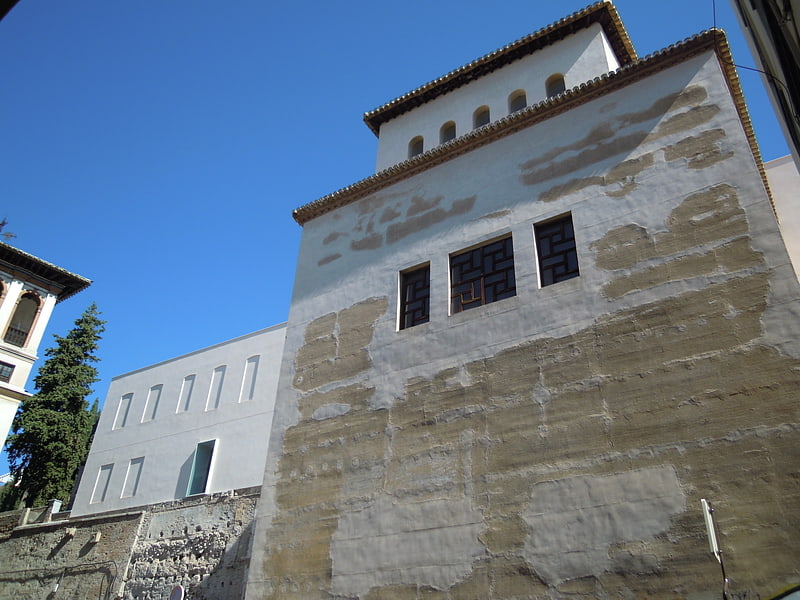
Tourist attraction in Granada, Spain. The Cuarto Real de Santo Domingo is a former Nasrid palace and convent in Granada, Spain. It is located in the Realejo quarter of the city.[10]
Address: Plaza Campos 6, 18009 Granada (Centro de Granada)
Castril Palace
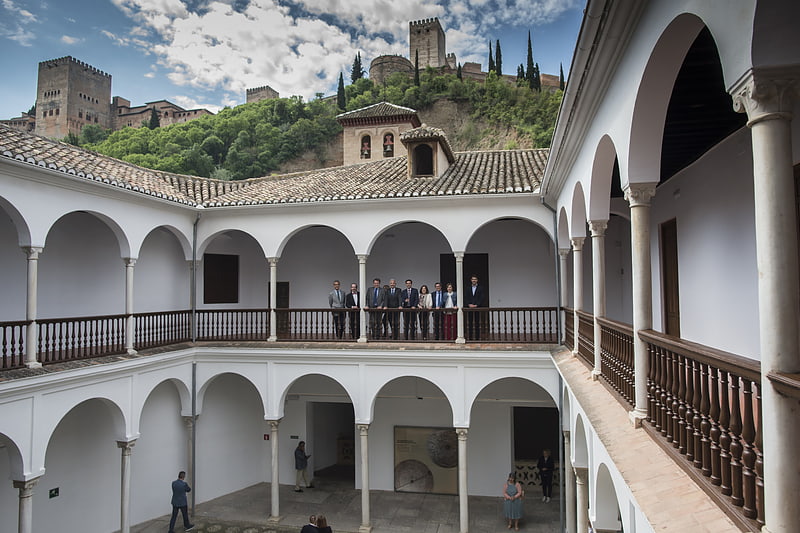
Also known as: Casa de Castril
Palace in Granada, Spain. The Castril palace is a Renaissance style palace located in Sacromonte, a district of the Spanish city of Granada. Nowadays it hosts the Archaeological Museum of Granada.
The house is nailed in the Race of the Darro, in the old Arab district of Ajsaris, seat of 16th century's granadine nobility. The palace is one of the best Renaissance palaces of Granada and belonged to the family of Hernando de Zafra, secretary of Catholic monarchs who participated actively in reconquering it from the Muslim hands during the Reconquista.
At the top of the facade the date of its foundation is recorded: 1539. This work has been attributed to Sebastián de Alcántara, one of the most outstanding disciples of Diego de Siloé. In 1917, the Castril palace was acquired by arabist and orientalist Leopoldo Eguílaz y Yanguas to make it a definitive location of the Archaeological Museum of Granada.[11]
Address: Museo Arqueologico, 18010 Granada (Albaicín)
Alcázar Genil
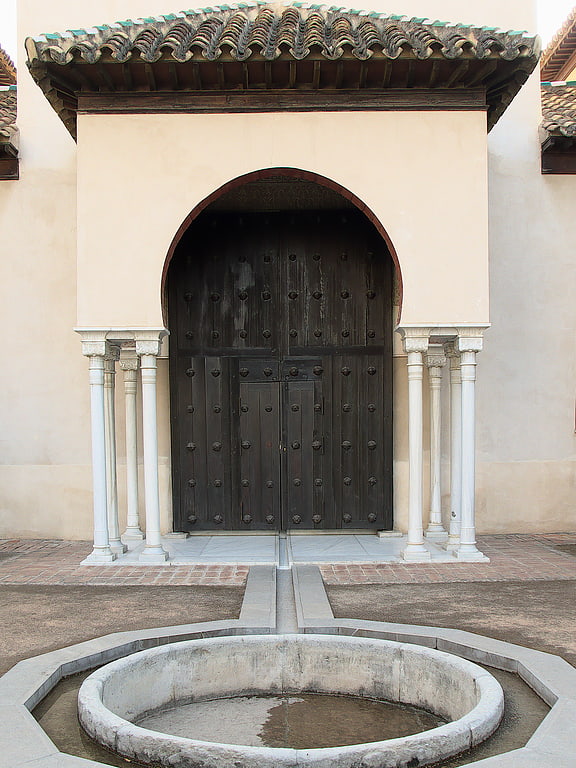
The Alcázar Genil is a Muslim-era palace in the city of Granada, Spain. It was originally called al-Qasr al-Sayyid and is located beside the River Genil outside the Alhambra's walls. Today, only a pavilion of the palace is preserved.
It was built in 1218 or 1219 by Sayyid Ishaq, a member of the Almohad dynasty. In 1237, Muhammad I of the Nasrid dynasty took over Granada and the dynasty was since associated with the palace. His grandson, Muhammad III (reigned 1302–1309) temporarily lived here after he was dethroned, before he moved to Almuñécar.[12]
Address: Calle del Rey Abu Said, S/N, Granada (Ronda)
Monasterio de San Jerónimo
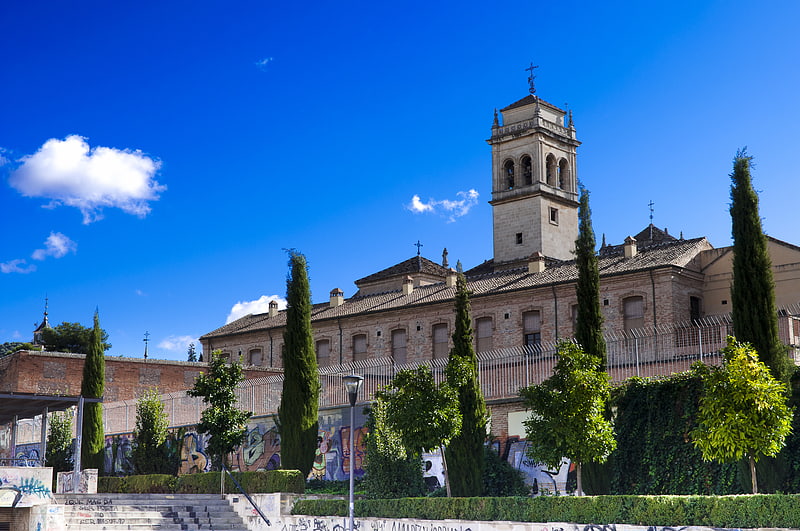
Ornate 1500s monastery and cloisters. The Royal Monastery of St. Jerome is a Roman Catholic Hieronymite monastery in Granada, Spain. Architecturally, it is in the Renaissance style. The church, famous for its architecture, was the first in the world consecrated to the Immaculate Conception of Mary.[13]
Address: Calle Rector Lopez Argueta, 18001 Granada (Centro de Granada)
Corral del Carbón
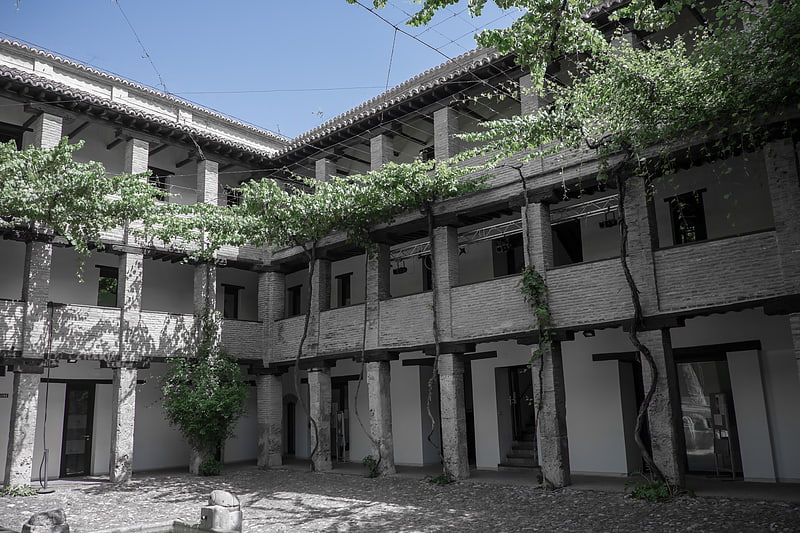
Monument in Granada, Spain. The Corral del Carbón, originally al-Funduq al-Jadida, is a 14th-century historic building in the Spanish city of Granada. It is the only Nasrid alhóndiga or funduq preserved in the Iberian peninsula. The building is located south of the Albaicin quarter, near the present-day Cathedral.[14]
Address: Calle Mariana Pineda, 18009 Granada (Centro de Granada)
Granada Charterhouse

Also known as: Cartuja de Granada
1500s structure with flamboyant details. Granada Charterhouse is a Carthusian monastery in Granada, Spain. It is one of the finest examples of Spanish Baroque architecture.
The charterhouse was founded in 1506; construction started ten years later, and continued for the following 300 years. While the exterior is a tame ember in comparison, the interior of the monastery's is a flamboyant explosion of ornamentation. Its complex echoing geometric surfaces make of it one of the masterpieces of Churrigueresque style. The most striking features include the tabernacle, constructed to a design by Francisco Hurtado Izquierdo, the church and the famous sacristy, built between 1727 and 1764 by Luis de Arévalo and F. Manuel Vasquez. The charterhouse displays an extensive collection of paintings, prominent among which the works of Fray Juan Sánchez Cotán.[15]
Address: Paseo de Cartuja S/N, 18011 Granada (Beiro)
Palace of the Forgotten

The Palace of the Forgotten is a museum in Granada, Spain, dedicated to the Spanish Inquisition, Jewish history, and Granada's and Andalusia's heritage. The building is located in the Albaicín, a neighbourhood declared a World Heritage Site by UNESCO in 1994 as an extension of the monumental complex of the Alhambra and the Generalife.
The museum occupies the symbolic Casa-Palacio de Santa Inés (Palace-House of St. Agnes), a restored 16th century building declared Bien de Interés Cultural (heritage site of cultural interest). On its façade there is an unidentified coat of arms, with features suggesting it belonged to a converted Jew who intended to show based on heraldry his status of pureza de sangre (blood purity). The museum, opened in 2014, also offers guided tours after previous booking.[16]
Park Federico García Lorca
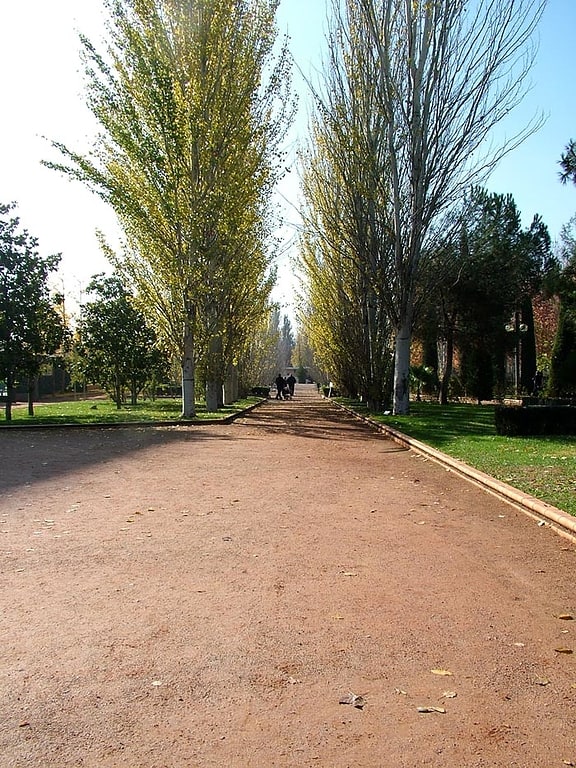
Also known as: Parque Federico García Lorca
Tranquil park with a museum and playground. The Park Federico García Lorca is a park situated in Arabial St. Granada, Spain. It is named after the Spanish poet Federico García Lorca. It is designed with many sunny alleys and palm trees.
The park is opened to the public during daylight hours. Admission is free.[17]
Address: C. Arabial, Granada (Ronda)
Madrasa of Granada
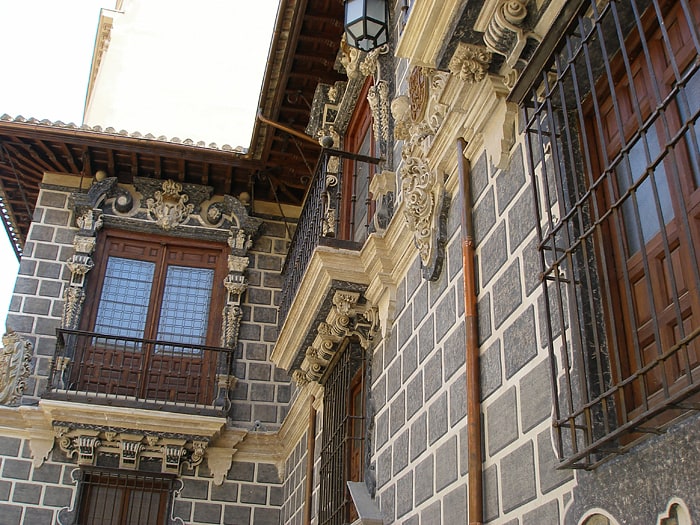
Also known as: Madraza de Granada
Cultural center in a circa-1300s space. The Madrasa of Granada was a madrasa in Granada, Andalusia, Spain. It was founded in 1349 by the Nasrid monarch Yusuf I, Sultan of Granada. The building is currently part of the University of Granada and is the seat of the Real Academia de Bellas Artes de Nuestra Señora de las Angustias.
It is located on the street now known as Calle Oficios. The madrasa was built at the heart of the city, near the main mosque (now the site of the Granada Cathedral) and the Alcaicería, then the elite bazaar where silk, gold, linen and other cloth were traded.[18]
Address: Calle Oficios, Granada (Centro de Granada)
Gate of the Pomegranates
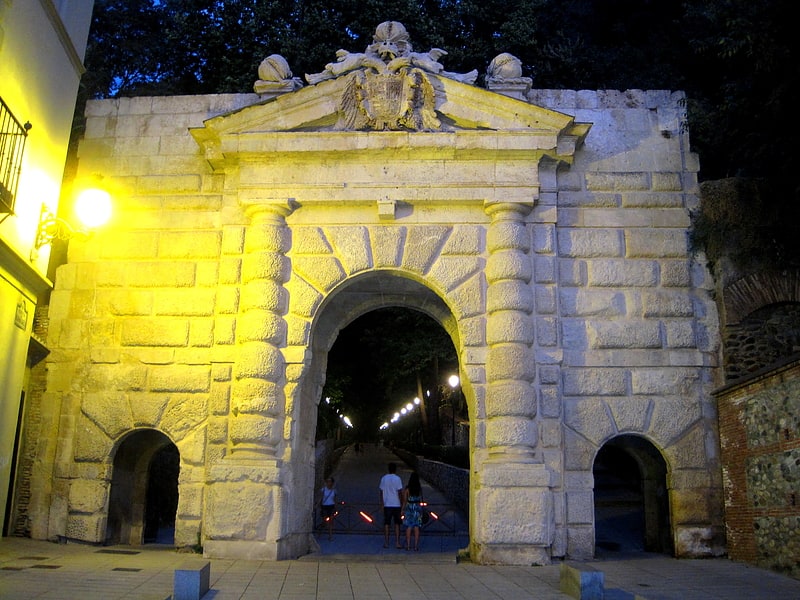
Also known as: Puerta de las Granadas
Monument in Granada, Spain. The Gate of the Pomegranates is an historical access point of a pathway that leads through the Forest of the Alhambra to the Nasrid palace that is the Alhambra, located in the city of Granada, Spain. The path starts in the city centre, Plaza Nueva, and continues up the Cuesta de Gomérez, before reaching the monument.[19]
Address: Cuesta de Gomerez 37, 18009 Granada (Centro de Granada)
Dar al-Horra
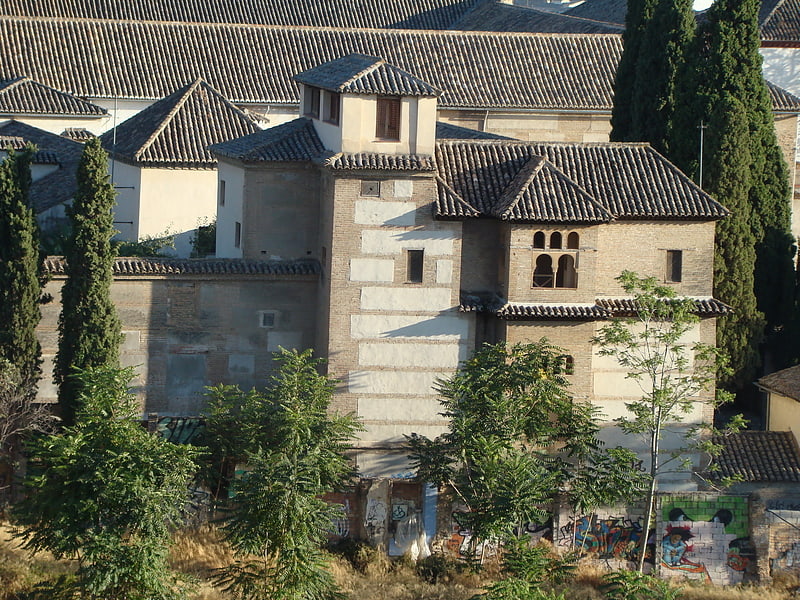
Dar al-Horra is a former 15th-century Nasrid palace located in the Albaicín quarter of Granada, Spain. Since the early 16th century it was used as part of the Monastery of Santa Isabel la Real. It is now a historic monument.[20]
Address: Callejon de Las Monjas Albayzin s/n, 18010 Granada (Albaicín)